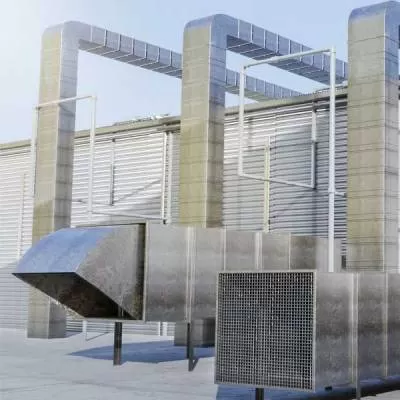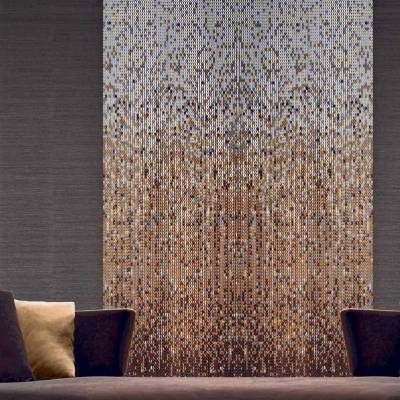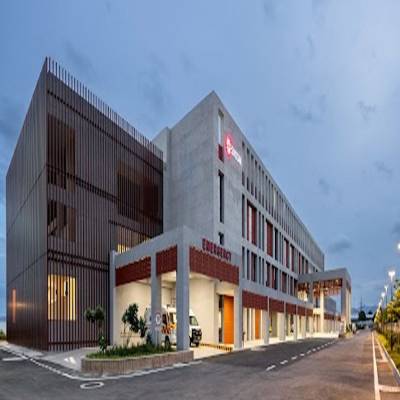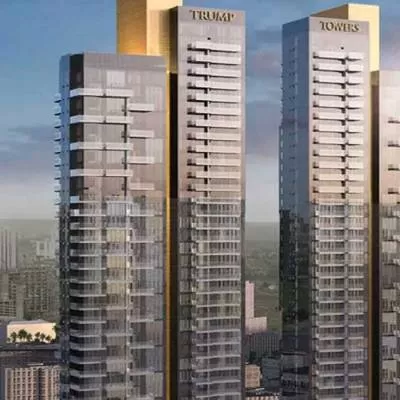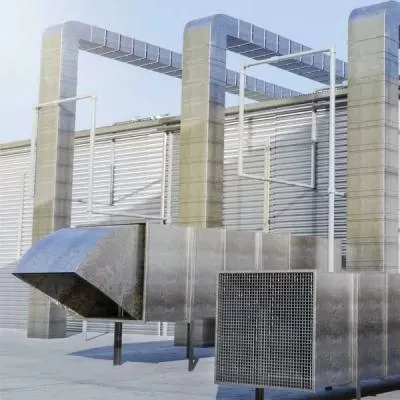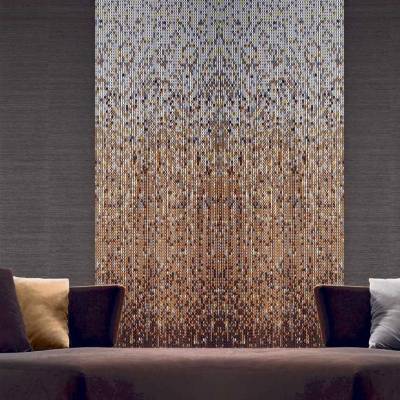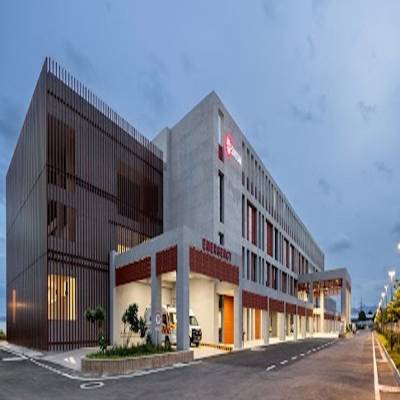- Home
- Real Estate
- The Chill Factor

The Chill Factor
Growing urbanisation is fuelling the construction of retail, hospitality and commercial properties and, in turn, expanding the market for HVAC systems in India. The Indian Society of Heating, Refrigerating and Air Conditioning Engineers (ISHRAE) estimates that India´s HVAC products market is worth Rs 15,000 crore. It expects the market to grow by 30 per cent to over Rs 20,000 crore by 2016.
¨The market for room air-conditioners, packaged air-conditioners, VRFs and chillers is between Rs 14,000 crore and Rs 15,000 crore, excluding ventilation jobs,¨agrees Senthil Thangam, General Manager, Product Management-Packaged and Central Airconditioning Products, Blue Star Ltd. However, he expects the market to grow at 12 per cent at the most.
Meanwhile, TechSci Research estimates that the HVAC market in India will touch Rs 25,183 crore by 2019 on the back of increasing HVAC adoption in IT/ITeS and growth in the commercial real-estate segment.
IT as a driver
Data centres need more cooling, which is why IT/ITeS real estate is emerging as a key driver of the HVAC industry. ¨IT buildings have higher costs due to strict temperature and humidity control norms, and because redundancies have to be created for server rooms or data rooms,¨explains Sandeep Ahuja, CEO, Richa Realtors. ¨Also, HVAC costs in hospitality are higher as occupants of such buildings must be provided with personal temperature and humidity controls. Less expensive common controls do not work,¨he adds.
So, Ahuja estimates that HVAC costs per tonne are about Rs 20,000 for residential buildings, Rs 25,000 to 30,000 for commercial properties and Rs 35,000 to 40,000 for IT/ITeS and hospitality buildings.
According to S Srinivas, Deputy Executive Director, IGBC, Confederation of Indian Industry, ¨HVAC capital costs in regular commercial buildings vary between Rs 30,000 and 40,000 per tonne of refrigeration depending on the HVAC technology that one chooses. Whereas, the corresponding capital cost for data centres varies between Rs 50,000 and 60,000 per tonne of refrigeration.¨
Active geographies
¨Most of the current market for HVAC systems is concentrated in Tier-I and Tier-II cities where construction activity is the highest,¨says Kamal Singh, Vice President, Power Electronics Division, Danfoss India.
TechSci Research says Delhi-NCR is driving sales in terms of volume as well as value in the Northern region.
As a result of the growing momentum towards smart cities, however, Singh expects the demand for HVAC systems to shift towards the new cities that will be built with energy-efficient infrastructure.
BEE Popular
The Bureau of Energy Efficiency (BEE) is actively working to create awareness about energy-efficient HVAC systems - especially its star-rated components. According to Srinivas, ¨BEE star rated HVAC appliances can save 10 per cent to 40 per cent of annual energy costs. Star rated window or split air-conditioners are a good choice for residences. Small office spaces can opt for ductable splits while larger floor spaces should go in for high efficiency screw and centrifugal chillers.¨
As a result, better informed Indian consumers are opting for energy efficient air-conditioners - ¨3-star and 5-star ACs are the most popular,¨says Sanjay Mahajan, Vice President Sales & Marketing, Carrier Midea India Pvt Ltd.
¨Our choice of BEE star rated HVAC components depends on the green rating we are trying to achieve for the building, the specifications of the HVAC system and the market for the building in question. HVAC investments can be higher in more saleable projects,¨says Ahuja.
In-demand technologies
More aware customers are demanding the latest technologies. ¨As a result of greater awareness about energy efficiency, consumers are migrating from using VRF technology, based on a combination of fixed compressor and inverter compressor, to inverter VRF systems based entirely on inverter compressors, which help lower running costs,¨observes Thangam. ¨Consumers are opting for chillers with lower integrated part load values and screw chillers with falling film evaporators. VFD screw chillers and magnetic-bearing centrifugal chillers are gaining prominence. Consumers are demanding star-labelled room air-conditioners that bring down operational costs. And sales of split air-conditioners with inverter compressors are rising.¨
¨Inverter technology is the latest evolution in the air-conditioning industry,¨adds Mahajan. ¨It has emerged as the fastest growing category and is destined for growth in coming years. Also, split air-conditioners have tremendously outgrown window ACs in recent years.
In western and southern India, split window ACs account for almost 90 per cent of the market.¨
¨We prefer energy-efficient inverter type VRV systems for our real estate projects. Inverter technology is a state-of- the-art one, ideal for individual and zonal control. It helps save space and reduces the electrical installation cost.
It is also highly efficient at part load operations, which helps to optimise energy savings. It uses eco-friendly refrigerant, which has zero ozone depletion process, also the refrigerant, can be controlled more smoothly,¨says JC Sharma, Vice Chairman & Managing Director, Sobha Ltd.
¨HVAC customers are increasingly demanding products with space and energy savings features with no loss of efficiency of fans or pumps at lower speeds,¨says Singh. To enhance energy savings and cut operational costs, companies are also turning to building management systems that integrate HVAC systems with lighting and access control. According to Thanik B, Director, Business Development & Strategy, Eco Buildings Business, Schneider Electric India, ¨The market for solutions automating HVAC and other building systems comprises structures with area typically below 100,000 sq ft as well as larger buildings. Schneider Electric India offers systems for both of these categories - Smartstruxure-Lite and SmartStruxure, respectively.
Smartstructure-Lite comes in wired as well as wireless versions, which makes it well suited for existing and retrofit projects. Sensor to controller and controller to controller communication uses the Zig Bee communication protocol. SmartStruxure is designed for mid to large building projects and seamlessly integrates with Schneider´s BMS components as well as third-party solutions. Sensors introduce intelligence into HVAC systems while the software helps monitor system performance and achieve maximum efficiency.¨
Differentiating propositions
With the entry of multinational players, the HVAC market in India has become increasingly crowded, which in turn has put the spotlight on product differentiation and delivering unique value propositions to customers. Delivering tailored solutions packaging a definite cost advantage with superior engineering is a good way to stand apart.
Danfoss has brought out products featuring smarter technologies capable of saving energy, manpower and space. For instance, the Danfoss FC 101 and FC 102 HVAC drives, which find application in chillers, feature a flexible modular design that makes them cabinet space-saving, versatile motor control solutions. These drives can help reduce the total system and life-cycle costs of HVAC applications. Danfoss Turbocor, another innovative drive, is a highly efficient, oil-free centrifugal compressor that can cut the energy consumed by a commercial HVAC system by 35 to 50 per cent. Blue Star´s innovations include products suited for high ambient Indian conditions. Blue Star VRF systems are designed to deliver their promised capacity at 43¦ Celsius without any deration, unlike most air-conditioners that function optimally at 35¦ Celsius. This keeps running costs low and helps customers optimise installed capacities. Blue Star has also come out with water-cooled variable speed centrifugal chillers with magnetic bearings.
Equipped with two-stage compressors and variable speed drives, these chillers are highly energy-efficient and can help cut operating costs by up to 20 per cent. Also, they operate without any oil, which further enhances efficiency by up to 8 per cent.
Schneider Electric has evolved into a one-stop solution provider to address BMS needs. ¨Along with the software systems, it offers a wide range of HVAC valves, actuators, sensors, drives and thermostats to choose from, as well as allied systems like IP-based CCTV systems, IP-based access control systems, lighting control and power management systems,¨says Thanik. Carrier Midea India is focusing on developing products that marry energy-efficiency and reliability with aesthetics and user-friendly features.
¨Our Carrier and Midea all-copper ranges have helped us maintain value for the customer and occupy a niche in the market,¨says Mahajan. Indeed, appropriate innovations are sure to turn up the heat in the chill industry.
Top of the charts
Room air-conditioners enjoy the biggest pie of the Indian HVAC market revenue thanks to being portable, easy to install and occupying less space than centralised air-conditioners. Such products are expected to hold onto the No. 1 position through to 2019. According to Sanjay Mahajan, Vice President Sales & Marketing, Carrier Midea India Pvt Ltd, ¨India´s residential air-conditioner market is about 4 million units.¨
Cost savings through BEE star rated systems
¨A 5-star air-conditioner saves about Rs 2,641 per annum for 1,200 hours of operation compared to a 1-star air conditioner. In most homes, air-conditioners are used for 1,000 to 1,200 hours per year, and in most offices (except in conference rooms) air-conditioners are used for 1,800 to 2,000 hours per year. So, it makes more sense to have a high star (5-star) air-conditioner in an office room and a lower star (3-star) air-conditioner at home. This is purely the economic rationale. Socially and environmentally conscious consumers prefer to use 5-star air conditioners in residences too because it implies lower energy consumption and greater CO2 emissions reduction,¨says Dr Ajay Mathur, Director General, Bureau of Energy Efficiency.
Get smart, save energy
- Building: Jindal Polyfilms´ Polyester (PET) lines production facility
- Location: Near Nashik
- Smart AC component: Danfoss VLT HVAC drives are helping to control the chillers that ensure the correct water temperature throughout the production process.
- Smartness: Danfoss VLT HVAC drives have helped Jindal Polyfilms improve the quality of the film they produce as the drives help precisely control the temperature of the chilled water. Also the chillers typically use 25 to 30 per cent less energy than a similar system without drive control. The resultant savings are about 40 per cent of the energy compared to full speed operation.
- Additional feature: The drives are compact, flexible, easy to maintain and reliable. They can be fitted according to customers´ needs.
Business is poised to heat up in the HVAC industry. Growing urbanisation is fuelling the construction of retail, hospitality and commercial properties and, in turn, expanding the market for HVAC systems in India. The Indian Society of Heating, Refrigerating and Air Conditioning Engineers (ISHRAE) estimates that India´s HVAC products market is worth Rs 15,000 crore. It expects the market to grow by 30 per cent to over Rs 20,000 crore by 2016. ¨The market for room air-conditioners, packaged air-conditioners, VRFs and chillers is between Rs 14,000 crore and Rs 15,000 crore, excluding ventilation jobs,¨agrees Senthil Thangam, General Manager, Product Management-Packaged and Central Airconditioning Products, Blue Star Ltd. However, he expects the market to grow at 12 per cent at the most. Meanwhile, TechSci Research estimates that the HVAC market in India will touch Rs 25,183 crore by 2019 on the back of increasing HVAC adoption in IT/ITeS and growth in the commercial real-estate segment. IT as a driver Data centres need more cooling, which is why IT/ITeS real estate is emerging as a key driver of the HVAC industry. ¨IT buildings have higher costs due to strict temperature and humidity control norms, and because redundancies have to be created for server rooms or data rooms,¨explains Sandeep Ahuja, CEO, Richa Realtors. ¨Also, HVAC costs in hospitality are higher as occupants of such buildings must be provided with personal temperature and humidity controls. Less expensive common controls do not work,¨he adds. So, Ahuja estimates that HVAC costs per tonne are about Rs 20,000 for residential buildings, Rs 25,000 to 30,000 for commercial properties and Rs 35,000 to 40,000 for IT/ITeS and hospitality buildings. According to S Srinivas, Deputy Executive Director, IGBC, Confederation of Indian Industry, ¨HVAC capital costs in regular commercial buildings vary between Rs 30,000 and 40,000 per tonne of refrigeration depending on the HVAC technology that one chooses. Whereas, the corresponding capital cost for data centres varies between Rs 50,000 and 60,000 per tonne of refrigeration.¨ Active geographies ¨Most of the current market for HVAC systems is concentrated in Tier-I and Tier-II cities where construction activity is the highest,¨says Kamal Singh, Vice President, Power Electronics Division, Danfoss India. TechSci Research says Delhi-NCR is driving sales in terms of volume as well as value in the Northern region. As a result of the growing momentum towards smart cities, however, Singh expects the demand for HVAC systems to shift towards the new cities that will be built with energy-efficient infrastructure. BEE Popular The Bureau of Energy Efficiency (BEE) is actively working to create awareness about energy-efficient HVAC systems - especially its star-rated components. According to Srinivas, ¨BEE star rated HVAC appliances can save 10 per cent to 40 per cent of annual energy costs. Star rated window or split air-conditioners are a good choice for residences. Small office spaces can opt for ductable splits while larger floor spaces should go in for high efficiency screw and centrifugal chillers.¨ As a result, better informed Indian consumers are opting for energy efficient air-conditioners - ¨3-star and 5-star ACs are the most popular,¨says Sanjay Mahajan, Vice President Sales & Marketing, Carrier Midea India Pvt Ltd. ¨Our choice of BEE star rated HVAC components depends on the green rating we are trying to achieve for the building, the specifications of the HVAC system and the market for the building in question. HVAC investments can be higher in more saleable projects,¨says Ahuja. In-demand technologies More aware customers are demanding the latest technologies. ¨As a result of greater awareness about energy efficiency, consumers are migrating from using VRF technology, based on a combination of fixed compressor and inverter compressor, to inverter VRF systems based entirely on inverter compressors, which help lower running costs,¨observes Thangam. ¨Consumers are opting for chillers with lower integrated part load values and screw chillers with falling film evaporators. VFD screw chillers and magnetic-bearing centrifugal chillers are gaining prominence. Consumers are demanding star-labelled room air-conditioners that bring down operational costs. And sales of split air-conditioners with inverter compressors are rising.¨ ¨Inverter technology is the latest evolution in the air-conditioning industry,¨adds Mahajan. ¨It has emerged as the fastest growing category and is destined for growth in coming years. Also, split air-conditioners have tremendously outgrown window ACs in recent years. In western and southern India, split window ACs account for almost 90 per cent of the market.¨ ¨We prefer energy-efficient inverter type VRV systems for our real estate projects. Inverter technology is a state-of- the-art one, ideal for individual and zonal control. It helps save space and reduces the electrical installation cost. It is also highly efficient at part load operations, which helps to optimise energy savings. It uses eco-friendly refrigerant, which has zero ozone depletion process, also the refrigerant, can be controlled more smoothly,¨says JC Sharma, Vice Chairman & Managing Director, Sobha Ltd. ¨HVAC customers are increasingly demanding products with space and energy savings features with no loss of efficiency of fans or pumps at lower speeds,¨says Singh. To enhance energy savings and cut operational costs, companies are also turning to building management systems that integrate HVAC systems with lighting and access control. According to Thanik B, Director, Business Development & Strategy, Eco Buildings Business, Schneider Electric India, ¨The market for solutions automating HVAC and other building systems comprises structures with area typically below 100,000 sq ft as well as larger buildings. Schneider Electric India offers systems for both of these categories - Smartstruxure-Lite and SmartStruxure, respectively. Smartstructure-Lite comes in wired as well as wireless versions, which makes it well suited for existing and retrofit projects. Sensor to controller and controller to controller communication uses the Zig Bee communication protocol. SmartStruxure is designed for mid to large building projects and seamlessly integrates with Schneider´s BMS components as well as third-party solutions. Sensors introduce intelligence into HVAC systems while the software helps monitor system performance and achieve maximum efficiency.¨ Differentiating propositions With the entry of multinational players, the HVAC market in India has become increasingly crowded, which in turn has put the spotlight on product differentiation and delivering unique value propositions to customers. Delivering tailored solutions packaging a definite cost advantage with superior engineering is a good way to stand apart. Danfoss has brought out products featuring smarter technologies capable of saving energy, manpower and space. For instance, the Danfoss FC 101 and FC 102 HVAC drives, which find application in chillers, feature a flexible modular design that makes them cabinet space-saving, versatile motor control solutions. These drives can help reduce the total system and life-cycle costs of HVAC applications. Danfoss Turbocor, another innovative drive, is a highly efficient, oil-free centrifugal compressor that can cut the energy consumed by a commercial HVAC system by 35 to 50 per cent. Blue Star´s innovations include products suited for high ambient Indian conditions. Blue Star VRF systems are designed to deliver their promised capacity at 43¦ Celsius without any deration, unlike most air-conditioners that function optimally at 35¦ Celsius. This keeps running costs low and helps customers optimise installed capacities. Blue Star has also come out with water-cooled variable speed centrifugal chillers with magnetic bearings. Equipped with two-stage compressors and variable speed drives, these chillers are highly energy-efficient and can help cut operating costs by up to 20 per cent. Also, they operate without any oil, which further enhances efficiency by up to 8 per cent. Schneider Electric has evolved into a one-stop solution provider to address BMS needs. ¨Along with the software systems, it offers a wide range of HVAC valves, actuators, sensors, drives and thermostats to choose from, as well as allied systems like IP-based CCTV systems, IP-based access control systems, lighting control and power management systems,¨says Thanik. Carrier Midea India is focusing on developing products that marry energy-efficiency and reliability with aesthetics and user-friendly features. ¨Our Carrier and Midea all-copper ranges have helped us maintain value for the customer and occupy a niche in the market,¨says Mahajan. Indeed, appropriate innovations are sure to turn up the heat in the chill industry. Top of the charts Room air-conditioners enjoy the biggest pie of the Indian HVAC market revenue thanks to being portable, easy to install and occupying less space than centralised air-conditioners. Such products are expected to hold onto the No. 1 position through to 2019. According to Sanjay Mahajan, Vice President Sales & Marketing, Carrier Midea India Pvt Ltd, ¨India´s residential air-conditioner market is about 4 million units.¨ Cost savings through BEE star rated systems ¨A 5-star air-conditioner saves about Rs 2,641 per annum for 1,200 hours of operation compared to a 1-star air conditioner. In most homes, air-conditioners are used for 1,000 to 1,200 hours per year, and in most offices (except in conference rooms) air-conditioners are used for 1,800 to 2,000 hours per year. So, it makes more sense to have a high star (5-star) air-conditioner in an office room and a lower star (3-star) air-conditioner at home. This is purely the economic rationale. Socially and environmentally conscious consumers prefer to use 5-star air conditioners in residences too because it implies lower energy consumption and greater CO2 emissions reduction,¨says Dr Ajay Mathur, Director General, Bureau of Energy Efficiency. Get smart, save energy Building: Jindal Polyfilms´ Polyester (PET) lines production facility Location: Near Nashik Smart AC component: Danfoss VLT HVAC drives are helping to control the chillers that ensure the correct water temperature throughout the production process. Smartness: Danfoss VLT HVAC drives have helped Jindal Polyfilms improve the quality of the film they produce as the drives help precisely control the temperature of the chilled water. Also the chillers typically use 25 to 30 per cent less energy than a similar system without drive control. The resultant savings are about 40 per cent of the energy compared to full speed operation. Additional feature: The drives are compact, flexible, easy to maintain and reliable. They can be fitted according to customers´ needs.


